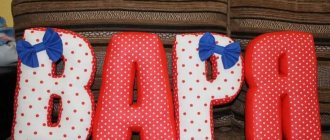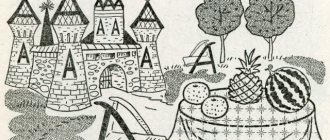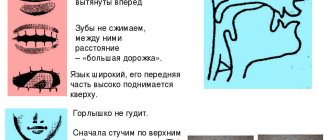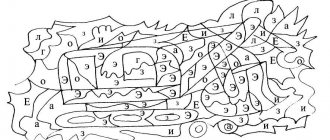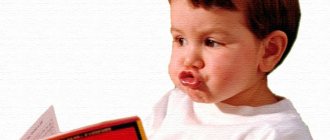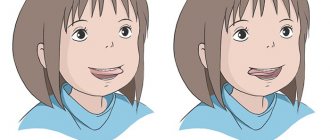Characteristics of sounds and letters
The first thing you want to know is whether it is hard or soft. In the Russian language, there is a rule according to which softness and hardness are determined by the vowel sound behind it. But there is an exception to the rule.
For the letter c, what sound is determined not by the vowel, but by the unshakable norm of the Russian language. She's always firm. The statement applies to any words, even such as “circus” or “chicken”. For the reader, the question of whether the letter q is soft or hard is no longer so acute. The answer is known.
To help kids remember the letter c, you can ask them to color it.
Color the letter c
However, this is not the only characteristic of the sound ts. Let's try to determine whether a letter is voiced or unvoiced. Let's try to shout the letter "c". Will not work. The reason is that the dull sound ts, another characteristic has been found.
The letter ts denotes the unvoiced sound ts and is a consonant.
The reader knows that c is always hard; the answer to the question is the sound c hard or soft. In colloquial speech there is not much difference between the voiceless and voiced parts of a word. They are pronounced almost identically in form, but differ greatly in content.
Other characteristics of the letter t:
- Unpaired. Probably the most interesting characteristic of the letter c. Some letters in the Russian language form a pair of voiceless and voiced letters. For example, the letters “t” and “d” or “k” and “g”. But in the case of the letter “c,” the well-known pattern collapses. What is the reason? Above we talked about the sound “ts”. This is not entirely correct from the point of view of the Russian language. The reader and I had to make a slight simplification to get the point across. There is no sound “ts” in Russian. What appears to be like this is made up of two other "t's" and "s"'s joined together. Historians do not know when this happened.
- Found in Slavic alphabets. The printed letter c, familiar from childhood, is found in the Ukrainian, Belarusian, Bulgarian, Macedonian, and Serbian alphabet. True, you need to know how the letter c is written in all these alphabets. Writing rules may change slightly. The serial number is also not the same. In Russian, the letter “ts” occupies 24th place, but in Bulgarian it ranks one step higher, and in Belarusian one step lower.
Pronunciation problems
Due to the complexity of the structure of the sound “C”, children often have difficulties with reproduction. They are usually divided into the following types:
-
The phoneme is pronounced with an incorrect position of the tongue. The organ is protruded between the front and upper incisors. The sound turns out to be lisping.
Interdental. - Prizubny
. The tip of the tongue focuses on the central incisors. The organ rests equally on the upper and lower teeth. This position forms a bow. An air stream passes through it as you exhale. Receives a hard or soft “T” (princess - Tarevna or Tyarevna). - Labial-dental. The organs of the articulatory apparatus take a position characteristic of the phoneme “C”. The lower lip is raised. A small gap forms between the incisors. An air stream comes out through it. It turns out that “C” is replaced by “S” or “F” (king - Sar or Far).
- Hissing. The tongue is pulled back. The speech organ lies at the bottom of the oral cavity. It tenses up when pronouncing. Its back reaches towards the sky. The air stream comes out through the gap between the back and the sky. A sound similar to a soft “Sh” is formed (chain - Shep).
- Whistling. The sound "C" is replaced by "S". The organs of speech are in the appropriate position. The tip of the tongue rests on the lower incisors. There is a notch on the back of the organ. An air stream passes through it, forming the sound of the phoneme “C”.
- Side. The tip of the speech organ touches the alveoli (the area behind the upper incisors). In this case, the tongue itself can be tilted in any direction. The air stream comes out in accordance with the position of the organ. Also, with lateral pronunciation, air can escape equally from both sides, as with the sound “L”.
- Nasal.
The defect occurs due to improper breathing. When you exhale, air passes through the nasal passages. The tongue tenses. The tip is pulled back. The organ is located at the bottom of the oral cavity. “X” sounds with a nasal tint (heron-XNaplya).
Important!
to independently determine what defect a baby has. Therefore, it is recommended to seek help from a specialist. To choose the right correction technique. In speech therapy, a whole file of tasks , each of which takes into account the age indicators and abilities of the child.
Origin of the letter
Finding out whether a sound is soft or hard is not difficult. It is much more difficult to establish the origin of the mysterious letter. Unfortunately, it is almost impossible to find the homeland of the letter. Letters that were written in an almost identical manner are included in many ancient alphabets. Among them are the Ethiopian or Aramaic language, the Coptic script.
Information about whether the letter c is hard or soft in all these languages could indirectly suggest the answer. If there is a moment of separation into hard and soft letters, the discovery would bring researchers closer to answering the question.
Another way to find out is to determine whether the sound t is soft or hard and whether it exists at all. If you can find the moment of separation of one sound into components, or, on the contrary, the moment of unification, the discovery will help you get closer to the answer to the riddle.
But many scientists are studying all these questions, but no answers have been found. Perhaps the situation will change soon.
Setting the sound
In speech therapy, the following methods are distinguished:
- Imitation (a common method, done as homework). We seat the baby in front of the mirror and sit next to him. We show the articulation of the phoneme “T”. At the same time, we explain that the tip of the tongue should be held behind the lower teeth. We form the sound “C”.
- Mechanical method. Take a spatula or a teaspoon. We tell the child to pronounce the sound “S”. Gently move the tip of the tongue down the oral cavity. It turns out that the phoneme is “C”.
- Mixed. We demonstrate the articulation of “S” or “T” in front of the mirror. With “C” we do the same as in the previous paragraph. At “T”, move the tip of the tongue behind the lower teeth with a spatula or spoon.
Don't miss: How to diagnose dyslalia?
After a successful result, it is necessary to automate the pronunciation.
How to write the letter C
We start writing the letter c from the top, first draw a vertical stick from top to bottom, then draw a small line to the left and then a vertical line up. Then we put a stroke at the bottom - this is the final line of our letter. We write a small printed letter c in the same way as a large letter, only in a smaller size.
The capital letter c is written like a capital letter and only at the bottom of this letter we write a loop. Look at the picture and try to write the letter C correctly.
Printed and capital letter c
Exercises
Before learning how to correctly pronounce the sound “C,” breathing is taught in speech therapy classes. Gymnastics is especially necessary for nasal defects.
Breathing warm-up – game activity “Butterfly”.
Items: paper butterflies 2-3 pcs. They can be cut out of paper or bought ready-made. We attach a string to each and hang it in front of the baby’s face.
Actions: invite your child to blow on the butterflies as hard as possible. They should fly apart in different directions. Make sure your inhalations are slow and your exhalations explosive and intermittent. Before classes, you can recite poems, sayings, and sing songs:
Fly, fly butterfly
High to the sky
There are your children -
On an aspen branch.
Repeat the game 2-5 times. Make sure your child doesn't get bored. For the older group of kids, classes are chosen that are more difficult. For example, blow a piece of cotton wool or a piece of napkin from the tip of your nose. Using your breath, try to keep the object from touching the ground for as long as possible.
Articulation exercises
Experts use such classes in preparatory groups. Initially, children need to train their speech apparatus.
Don't miss: Sound L and L
Gymnastics for lips:
- We stretch our lips into a smile. They are in tension.
- We close our teeth.
- The bite is natural.
- We do not push the front and upper incisors forward.
- Hold the position for 10-15 seconds. Repeat the warm-up up to 5 times in front of the mirror.
Gymnastics for the tongue:
- Knead the dough (develops the ability to hold your tongue correctly). We smile and open our mouth as wide as possible. We place the speech organ on the lower lip. We start saying la-la-la-la while we slap our lips on the calm tongue. The air stream should come out gradually. To control the breathing process, use a piece of cotton wool. Bring it to your baby's mouth. The task is completed correctly if the cotton wool deviates slightly. The duration of the lesson is 15-20 seconds, 2-3 approaches.
(muscle strengthening). We open our mouth. The lips are smiling. The wide tongue stretches upward. We try to reach the tip of the nose. Then we lower the speech organ down. We reach to the chin. Then we reach for the upper lip with our tongue. Then we reach the bottom. We also do it in turns with the teeth. Then we hide our tongue inside and touch the alveoli at the top and bottom. We rest for 15 seconds. It is important to ensure that the speech organ remains wide during gymnastics.
Swing- Coil (practicing the skill of raising the sides of the tongue). Open the oral cavity. Keep your lips smiling. We place the tip of the organ on the front central incisors. The sides touch the upper molars. We roll the body of the tongue forward and then back into the oral cavity. It is important that the tip of the organ is wide and does not protrude beyond the teeth. The articulatory apparatus is motionless. We perform 2-3 times with a break of 20 seconds.
It is important to move on to a new
level of training after mastering the previous one. The child must complete tasks clearly and quickly.
Examples of words starting with the letter C
There is a good story about our favorite letter that lists words starting with the letter c for children. One day the children noticed the letter C was missing. It was there, and then it disappeared suddenly. Then the children thought: where to look for her?
The answer was found quickly - in the circus! We got there, but there were no letters. Then, at the very end of the performance, the circus performer took out a cylinder and began to take out various objects from it. First I took out the flowers. But the circus performer didn’t think it was enough and chickens crawled out of the cylinder. After another swing, a huge heron came out, followed by a runaway letter “C”.
...first he took flowers out of his hat...
General recommendations
As a rule, by the age of 3-4 years, children begin to use whistling sounds in their speech. If this does not happen, you need to seek the help of a specialist or try to correct this problem yourself through articulatory gymnastics and speech therapy exercises.
The problem of a child’s speech defect should not be left to chance, since incorrect pronunciation of sounds will also be reflected in the spelling (dysgraphia).
Classes should be selected taking into account the age and individual characteristics of the child. Experts recommend practicing every day for 5-10 minutes, then the result will not be long in coming, and the child will not be overtired.
Features of articulation
Normally, when pronouncing C, the lips are in the position of a slight smile, the teeth are visible. They are slightly closer together, there should be a small gap between them. The tip of the tongue should be made wide and placed in the lower oral cavity. And its side edges touch the upper teeth.
Feature of the articulation of the sound C - the front part of the tongue should take a position for several seconds as for pronouncing T. In this position, together with the alveoli, the tongue forms a gap, and when exhaling, the stream turns out to be strong, cold, as when pronouncing S. Pay the child’s attention to the peculiarity of the exhaled stream: it not just directional, but jerk-like. When pronouncing this phoneme, a person pushes out air. The vocal cords are open and do not work, so the sound C is a dull consonant.
Every letter has a riddle
So, as it turns out, the letter “c” is not so simple.
By the way, it is present in all canonical alphabets of the Slavs, listed as “tse”. In church literature and in the Old Church Slavonic language it was called “tsi”, and sometimes “tsi”.
The modern version of the spelling of this letter goes back to the Cyrillic alphabet. But where and how it appeared there is no longer possible to find out. One thing is clear: similar outlines of the letter “c” can be seen among the ancient Arameans, Jews and Ethiopians.
Speech diagnostics
To determine the cause of the violation of sound pronunciation, it is necessary to make a diagnosis of speech development. The speech therapist begins his work by examining the articulatory apparatus: appearance, motor skills. To do this, he asks the child to perform exercises to maintain the desired posture - in the case of a whistling group of sounds, they practice the lower position of the tongue, holding it behind the teeth, and dynamic tasks that help assess the mobility of the lips and tongue. First, the speech therapist shows the exercise, then asks the child to repeat it.
Speech therapy diagnostics includes tasks to assess speech breathing. The specialist pays attention to how the child inhales and exhales, and whether his diaphragm is working. To assess the force of exhalation, you can offer to blow away a light object or play the pipe.
Speech material must be selected not only from C, but also from C and T, because production of a given sound can only begin if the child pronounces the reference phonemes correctly.
The child repeats all tasks for naming syllables and words after the adult. It's the same with phrases and sentences. All instructions must be clear and the adult's pronunciation must be clear.
And in tasks for coherent speech, the speech therapist asks the child to compose a short story based on the picture or tell something about a subject that is close to him. You need to select the material so that one word and sentence does not contain C, S and T at once.
Then the child is offered tasks to identify the desired sound among others. Then the speech therapist shows him pictures and asks him to name words that contain C. Before completing the sound analysis task, the adult explains to the child what the beginning of a word, the middle and the end are. Then he says a word and asks to determine where the sound is.
In addition to speech diagnostics, the speech therapist must communicate with parents. This is necessary not only to advise them on all important issues and explain the corrective work plan. So the specialist will also determine in what speech environment the child is being brought up and whether it is necessary to carry out work in this direction.
Duration and tips for organizing correctional work
The duration of therapy depends on the speech disorder and how parents responsibly approach speech therapy sessions. Their number should be at least 3-4 times a week. Their duration depends on the age of the child. Be sure to use visual material.
It's okay if automation takes longer in syllables and words. Often, consolidation in coherent speech occurs faster because the child has mastered correct articulation. But you only need to automate clear sound without distortion.
For correctional work to be effective, you may need the help of other specialists, especially if the child has a complex speech disorder. This is a defectologist, a neurologist, because in this case it is necessary to provide a complex impact.
Special cases
To fully study the question: is the letter “c” soft or hard, you should turn to its spelling with the vowel “s”.
The syllable “tsy” is written in special cases, which include:
- words: gypsy, chicken, tsyts, mtsyri and similar roots related to them;
- possessive adjectives containing the suffix “yn” after the root ending in “ts”: Lisitsyn, Kuritsyn. This rule does not apply to surnames: Vitsyn, Stanitsyn, Yeltsin;
- adjectives ending in “th” following a stem ending in the letter “c”: chubby, pale-faced;
- nouns, after the stem ending with the letter “c” there is the ending “y”: months, peppers, saints;
- surnames of Ukrainian etymology: Tsybin, Tsybulko;
- proper names of foreign origin: Qin, Wang Ci;
- derivative forms of the imperfective verb “to stsat”: stsysh, stsyt.
With the exception of the above points, the vowel letter “i” is written in combination with the letter “ts”.

